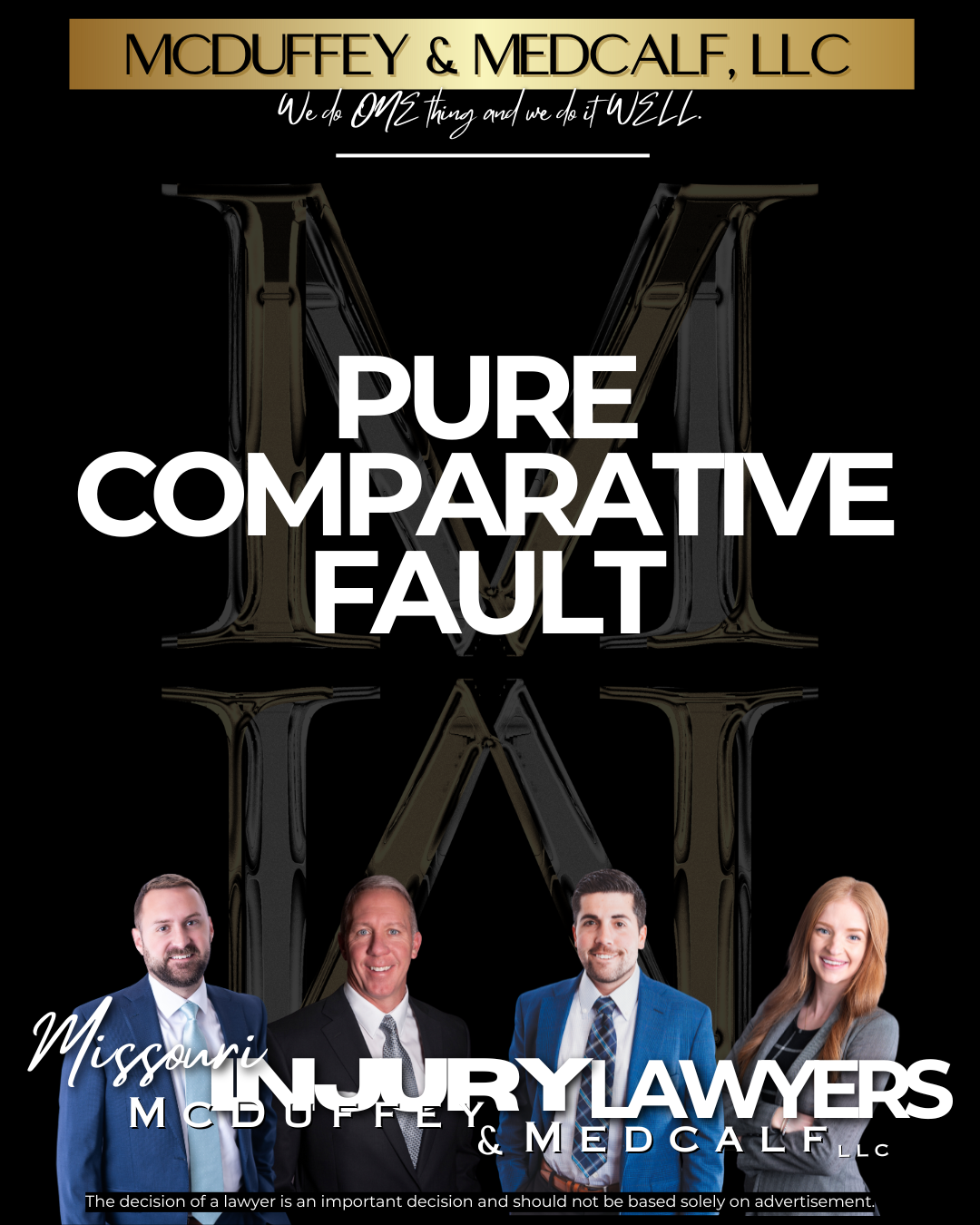Pure Comparative Fault
How does Missouri law determine fault in a car accident, and what should accident victims know about it?
Missouri uses a system called pure comparative fault to determine who is responsible for a car accident. This means that a jury looks at the actions of everyone involved and decides what percentage of the fault each person has. If you are found to be partly at fault, your compensation will be reduced by that percentage. For example, if you are 30% at fault, your compensation will be reduced by 30%.
In this system, both the plaintiff (the person bringing the claim) and the defendant (the person being sued) are considered. The jury will look at whether each party acted negligently or recklessly. It’s important to know that fault is only assigned to those who are part of the trial, but defendants can present evidence that someone else, who is not part of the trial, was responsible for the accident.
Additionally, police officers in Missouri are not allowed to give their opinions on who was at fault in a traffic accident during a trial, as their opinions might unfairly influence the jury.
For More Information:
Semi-Truck Collision Injury Law: Proving Fault

FOR MORE INFORMATION & TO SEE THE LAWYERS AT The Work Comp Center-MCDUFFEY & MEDCALF LLC CAN HELP YOU WITH YOUR PERSONAL INJURY CASE:
CALL 417-322-6418 TO SCHEDULE A FREE CONSULT
EMAIL: br**@*********aw.com
OR SUBMIT YOUR INFORMATION HERE FOR A FREE CASE EVALUATION.
This article is NOT intended to substitute for consultation with a lawyer, nor should you rely upon this article in place of a lawyer. In most cases, consultations with a lawyer are free. We strongly advise you discuss the facts of your case with any attorney. The choice of an attorney is an important decision, and should not be based on this article alone. Other lawyers might disagree with any opinions offered herein.








